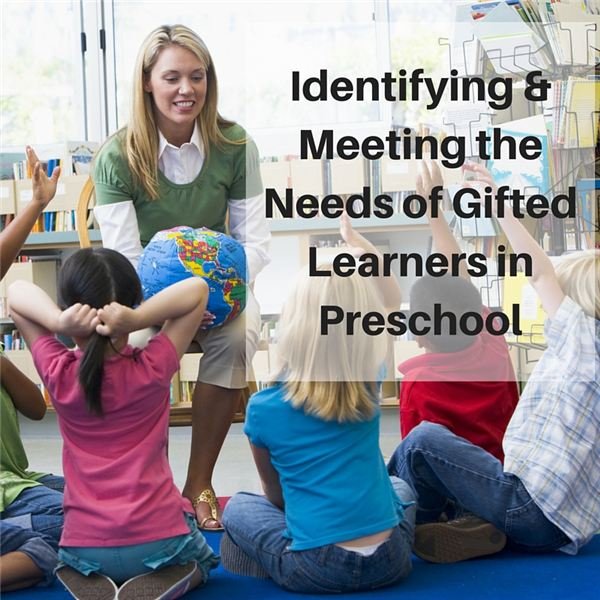Identifying & Meeting the Needs of Gifted Children in the Preschool Classroom
All young children bring varying abilities across all content areas to the early childhood classroom. Their experiences and interests can vary greatly and it can sometimes be a challenge to meet the needs and interests of the highest ability children in the typical preschool environment. How can we as educators identify these children who exhibit high-potential characteristics and create an environment that will challenge and extend their learning through a universally designed curriculum?
Young gifted children possess and present a unique set of behaviors that may be assessed and evaluated in a variety of ways. While all children possess talents and strengths that may be easily presented or potentially limited do to their environment and experiences, most children that are identified as “gifted” in their later years share some common characteristics. A higher level of curiosity and a strong desire to know how or why something works is present at a level more intense than their same-aged peers is one strong indicator of a child with higher cognitive ability. Gifted preschool children often have an intrinsic motivation to learn.
Other characteristics include: higher vocabulary and early language development, creative and abstract thinking, excellent memory, asks many questions, longer attention spans, figures things out quickly (puzzles, games, toys), intuitive understanding of mathematical concepts, exhibits advanced observational skills, inquisitive, enjoys learning, possesses a wide range of interests, and is extra sensitive to rules such as fairness and honestly.
How to Identify Gifted Children
Identifying these children can be challenging in a preschool program. Children’s skills and abilities depend on culture, environment, exposure to various opportunities, and family dynamics. Listening and observing children during play, formal assessments and/or screening, and evaluation of their work over time are excellent ways to get an understanding of the whole child.
During observations, look for behaviors that indicate a deeper level of play and understanding than their same-aged peers. For example, a child may not only “fly” a plane, but also build an airport, create a runway, and act out the role of the traffic control man while assigning roles to others. Document these findings with notes or pictures on a consistent basis in a record or work sample portfolio. Keeping a log of observable behaviors over time will highlight the child’s areas of strength.
Formal assessments or screenings will give information as to how the child’s abilities compare to others the same age. These assessments can include both observed skills in the natural environment and direct interaction. While formal screenings can provide important information as to the abilities of a child in all developmental domains, they are not to be used exclusively. Children will “show what they know” during extended play opportunities in which they are actively participating. For this reason, teachers must design an environment with appropriate materials to ensure accurate participation to observe for specific skill development.
Creating Challenging Learning Opportunities
A challenging and developmentally appropriate learning environment is essential to promote growth and learning in all children. Teachers must create an environment that allows for extension of play and exploration of subjects in depth. Most highly-abled children are advanced in their language and literacy skills. A literacy rich environment includes opportunities for children to speak, listen, read, and write during active play. Journaling, making grocery lists, and writing letters to friends are all ways to incorporate open-ended literacy challenges in authentic ways.
Best practice in literacy development would allow children to naturally differentiate their reading by choosing their own reading material, writing at their own pace, and communicating with peers at their level. Literacy should be a continuous part of the daily routine and teachers must intentionally plan and scaffold instruction to challenge all children.
Authentic learning experiences are meaningful and purposeful. For example, one child brought a picture of his new puppy to school to share with his peers. This led to a discussion on which children have pets at home. This topic was personal to the children and it was exciting for them to carry it over into the other centers around the room. Concrete manipulatives were used to represent animals to count how many pets each child had.
Young gifted children will intrinsically extend an idea like this into more learning opportunities. They may write about pets, ask peers about their pets, want to learn about specific animals in more detail, create a project, read about dogs in books, etc. Providing opportunities and allowing children to extend their learning through further discussion and active play differentiates the content in a natural and purposeful manner.
Activities that encourage open-ended play such as blocks, manipulatives, authentic art experiences, dramatic play are ideal to allow children to extend their learning. Games such as traditional board games or teacher mad games can allow a student proficient in early math skills opportunities to begin playing with addition and subtraction concepts. Best practice supports a curriculum that allows children to make choices about their learning and to pursue answers to their own questions. Centers around the classroom should allow for cross-over play of materials and incorporate embedded opportunities for literacy as well.
In summary, the teachers of young children have a responsibility to cultivate children’s curiosity and design environments that challenge and extend learning for even the highest-abled children. Allowing and providing support for self-directed exploration and creating opportunities for in-depth knowledge help the young gifted child to continue to grow in their learning and concept development.
References
- Hertzog, N. B., (2008). Early Childhood Gifted Education. Waco, TX. Prufrock Press.
- Ruf, D. (2009). Preschool Behaviors in Gifted Children. MN Council for the Gifted and Talented. MN.
